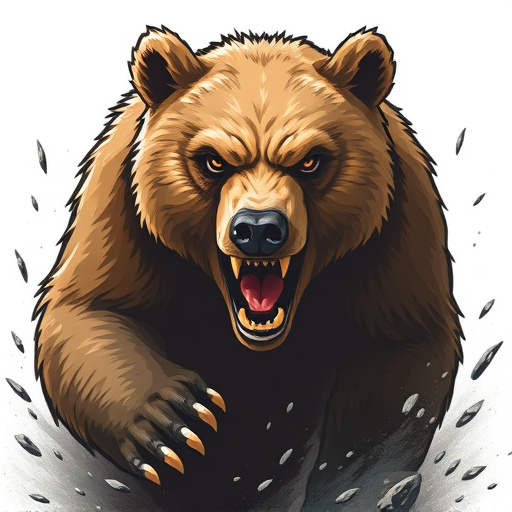Bear spray effectiveness hinges on wind direction safety tips: assess and keep upwind, aim high above bear's head at close range (20-30 feet), use short bursts with lateral movement. Proper usage, including can size, pattern, and range, along with responsible outdoor behavior, enhances safety during encounters. Maximize protection by keeping back against barrier or climbing tree while using spray until bear retreats, but remain cautious as it's not 100% effective.
“Discover the power of bear spray—a crucial tool in protecting yourself during wildlife encounters. Understanding its effectiveness and proper usage can significantly enhance your safety in bear country. This comprehensive guide explores key aspects, including how to choose the right bear spray tailored to your needs, mastering application techniques, and navigating wind direction safety tips for optimal results. By following these strategies, you’ll gain confidence and peace of mind while exploring nature.”
- Understanding Bear Spray Effectiveness
- Choosing the Right Bear Spray for You
- Applying Bear Spray Properly
- Wind Direction Safety Tips for Effective Use
Understanding Bear Spray Effectiveness
Understanding Bear Spray Effectiveness
Bear spray is a popular tool for outdoor enthusiasts navigating areas inhabited by bears. Its effectiveness depends on several factors, including wind direction and proper usage. When used correctly, bear spray can create a protective barrier between you and the bear, giving you valuable time to retreat or defend yourself. However, it’s crucial to remember that no single method guarantees 100% protection against bear attacks; rather, it offers an additional layer of safety.
Safety tips include ensuring you have a clear understanding of wind direction before spraying—always aim towards the bear’s face and back, away from your own face and body. Proper usage involves holding the can upright, spraying in short bursts, and moving laterally to ensure maximum coverage. Bear spray is most effective as a deterrent when used early in an encounter, but it can still be useful if applied calmly and strategically during an aggressive or charged meeting with a bear.
Choosing the Right Bear Spray for You
Choosing the right bear spray is essential for your safety and the effectiveness of your encounter protection. Consider factors like can size, spray pattern, and range when selecting a product. Ensure the can is compact and easily accessible, allowing for quick deployment in case of an unexpected encounter. Check if it’s designed to work in various weather conditions and wind directions; safety tips recommend aiming for the bear’s face and eyes, but be mindful that wind direction can affect spray distribution. Look for brands that offer safety instructions and guarantee their products’ quality and performance.
Remember, bear spray is just one tool in your safety kit. Proper training, knowledge of bear behavior, and understanding local guidelines are equally important to navigate these encounters responsibly. Always follow safety tips, like making noise to deter bears, traveling in groups, and keeping food securely stored, to minimize risks during outdoor activities in bear country.
Applying Bear Spray Properly
Applying bear spray properly is crucial for ensuring safety during a wildlife encounter. First, assess the wind direction before deploying the spray. Aim high and slightly above the bear’s head; the goal is to cover its eyes, nose, and mouth. Remember, bear spray is most effective when used at close range, typically within 20-30 feet (6-10 meters).
To maximize safety tips, always keep your back against a barrier or climb a tree if possible before applying bear spray. When the bear charges, activate the spray and hold it in place until the bear turns away or retreats. It’s important to note that bear spray is not 100% effective, so always treat encounters with caution and be prepared to escape if necessary.
Wind Direction Safety Tips for Effective Use
When using bear spray, understanding wind direction safety tips is crucial for its effective use. Always remember to keep yourself upwind from bears; this means positioning yourself so that any spray from your canister doesn’t blow back towards you. If possible, maintain a higher elevation than the bears, as this ensures the spray will drift downwards and cover a wider area.
Before applying bear spray, assess the wind speed and direction. A light breeze can help disperse the spray evenly, but strong winds may cause it to blow back or not reach the target effectively. If conditions are unfavorable, consider alternative measures such as making loud noises to deter bears or seeking shelter until the wind calms down. Always follow local guidelines and recommendations regarding bear spray usage in specific areas.
Bear spray is an important tool for anyone venturing into bear country, but its effectiveness heavily depends on proper usage and understanding wind direction safety tips. By choosing the right bear spray and applying it correctly, you can significantly increase your protection. Remember to always be aware of the wind’s position to ensure the spray reaches the bear effectively. With these Bear Spray Wind Direction Safety Tips in mind, you’ll be better prepared for potential encounters and enhance your overall safety in wild environments.
